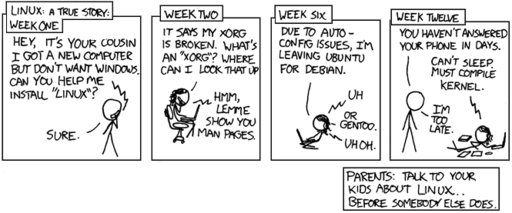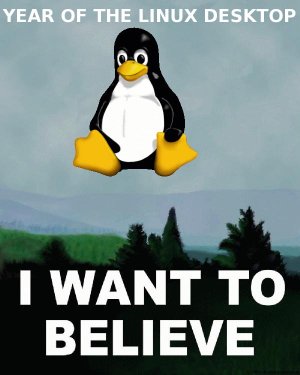
The OS that is “just about to change the world” (not my words, definitely not my belief), as soon as it stops being associated with the leetnix and zealot crowd that believe it to be the answer to all computing-related problems.
After ten years or so, it hasn’t made a sizable dent on the incumbent PC desktop environment, and it took until the 2020s for it to start looking like an alternative to Windows, largely due to Valve’s heavy investment in Proton.
Not having learned anything from the UNIX Wars of the previous generation, Linux is split into several different factions/sects/distributions.
When I must use it, I usually prefer Ubuntu and derived works, although of late I have shifted towards Fedora.
I used to run RedHat since version 4.2, but over the decades it became stodgy and outdated, with extremely poor hardware support and lots of vagaries on the server (and licensing) side – but your mileage may vary, especially if you’re into the bleeding edge.
I just prefer to use what works properly the first time, every time, and Fedora has started to become that. Maybe.
Resources
- One File Linux - a single file distribution that can run from EFI.
Ancient Resources
- Looking Glass – virtualization with a fast physical display
- Small Linux – useful for turning very old machines into X clients.
- Filesystem Hierarchy Standard
- Four Head Linux
- FlashLinux
- Zenwalk – the new name for Mini-Slack, a distro that I’ve used occasionally for old laptops.
- Slax – another Slackware variant
- Installation without removable media
- Symphony – a different desktop environment
- PuppyLinux – a nice, compact mini-distribution
Stuff that may never come true
